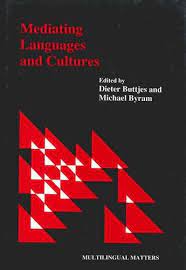To understand the theories on the field that I am investigating, I should get acquainted with the thoughts of the experts that become the references by many researchers in the related field. This is very important to make me know what has been discussed by the experts and what has not, so I will bring novelty into my research project.
Continue reading “List of experts”Poststructuralist identity
Currently, I am investigating an identification process undergone by SL learners in a local multilingual educational institution. One of the theoretical backgrounds that underlies this topic is an explanation about the poststructuralist identity, since most of the discussions of this topic use this perspective as an analysis lens.
Continue reading “Poststructuralist identity”My current research project
Now, I am investigating how L2 learners in a local, multilingual educational institution negotiate their identities. The institution is multilingual in terms of having thousands of students from diverse linguistic repertoires and providing them with ample opportunities of linguistic experiences.
Continue reading “My current research project”Lecture series: Sociolinguistic Pattern

The series of this post will be about the materials of my lecture in 2021.
Continue reading “Lecture series: Sociolinguistic Pattern”Teaching script: let’s practice writing an application letter

Today is the time to make my students practice writing an application letter. Previously, they learn the elements of an application letter and some important phrases that frequently appear in it.
Before you read teaching script, make sure that you have the reference book used in this teaching, that is Pathway to English. You can buy the copy in this link.
Continue reading “Teaching script: let’s practice writing an application letter”Teaching script: an application letter
In this post, I write my teaching script about “an application letter”. This material is taught for the twelfth graders in Indonesian senior high schools. You can use this post as an idea to design your own class. In the end of the section I attach the word version of the material. Have a nice reading!
Continue reading “Teaching script: an application letter”Reading List: Culture, Identity and English Language Teaching

This reading list is intended to study how culture, identity and English language teaching intersect both theoretically and practically.
The reading is not intended to understand the whole concepts provided by the authors in each article, but to reveal the intersections of those elements.
Continue reading “Reading List: Culture, Identity and English Language Teaching”Figuring out the Big Picture of the Research

I need to figure out the big picture of the topic of my research if I want to finish my research projects in an effective time and way. I must not get trapped by many subtopics to discuss during my studies so that I may get lost and never finish the projects.
Currently, I am studying the relationships between culture, identity and language teaching and trying to know how they intersect especially in the practices of language teaching and learning. The result of this study will lead me to some pedagogical implications that teachers may consider when they undergo their professional works.
Continue reading “Figuring out the Big Picture of the Research”Mediating Languages and Cultures

The book is good for understanding how culture is carried out in the practices of language teaching and learning. One of the topics exposed is Byram’s proposal of integrating language and culture in one process, so the teachers will acquire the elements simultaneously.
One of the topics exposed is Byram’s proposal of integrating language and culture in one process
In Byram’s article we can learn some promising proposals in carrying out culture in language teaching. Decades ago, culture was usually neglected in the process, that the students merely acquired new language structures into their mind without considering the culture of the L2 speakers.
In the further development, it feels some necessity in integrating cultures in LTT, but many still find the best ways to do that. This article which is put in the first section of the book gives us good insight about the topic.
Other titles are also worth reading such as Buttjes’ article about mediating languages and cultures, developing research-based theories of internal communication and many other topics related to language and culture teaching. []
Culture, Identity and ELT
My current research topic is about the intersection of culture, identity and English language teaching. This topic is emerging since social theories help establish what is called “the social turn” in the field of linguistics.
This topic has some aspects to discuss further. One is about culture. Recent trend says that English language teaching cannot be excluded from the acquisition of culture, especially in L2.
Continue reading “Culture, Identity and ELT”Bringing ELT to the Next Level

LANGUAGE studies are always related to the teaching practices. We learn languages in order to know how to teach them effectively. We learn languages (their structures and the social aspects) and always want to know how to teach them both in formal and informal instructions.
The statement above can be traced back to the human being’s interest in learning new languages, especially the foreign ones. In order to acquire new languages effectively, we have to know how human beings learn them. It is related to the fields of psycholinguistics and sociolinguistics which are important in our research.
We also want to make our acquisition of the new language sensitive to the social conditions. Then, we need the understanding of other fields such as discourse studies, semantics, pragmatics, semiotics, etc. The comprehensive understanding of the aforementioned fields will make the acquisition process effective and efficient. It will cope with certain problems that usually occur when one learns new languages.
To this point, it is important for all language teachers and researchers to understand certain aspects of linguistics in terms of building the sound theoretical and practical aspects of language teaching. We can get benefits from it so that our field of expertise will improve form time to time.
======
For me, as an ELT teacher and researcher in the advanced level, understanding the linguistic and non-linguistic aspects of ELT is important. I should learn these aspects and relate them to the practices of ELT in its various uses. For instance, I learn the identity construction theories (sociolinguistics) and its pedagogical implications. This will help me – or other teachers to bring the ELT profession to the next level. []
Simple Future
By Syahruzzaky

Introduction
We are going to study Simple Future on this post. It is the way we talk about future actions. Before you learn this chapter, you had better understand Present Continuous.
Continue reading “Simple Future”Past Continuous Tense [Exercises]
By Syahruzzaky
Look at the pictures. Where were these people at 3 o’clock yesterday afternoon? And what were they doing? Write two sentences for each picture.
- Rachel was at home. She was watching TV.
- Jack and Kate ………………. . They …………………
- Tim …………………………………………………………..
- …………………………………………………………………
- …………………………………………………………………
- And you? I ………………………………………………..
Complete the questions. Use was/were -ing. Use what/where/why if necessary.
- (you/live) Where were you living in 1999? In London.
- (you/do) …………………………. at 2 o’clock? I was asleep.
- (it/rain) …………….when you got up? No, it was sunny.
- (Sue/drive) ………………. so fast? Because she was late.
- (Tim/wear) ………… a suit yesterday? No, T-shirts and jeans.
Look at the picture. You saw Joe in the street yesterday afternoon. What was he doing? Write positive or negative sentences.
- (wear / a jacket) He wasn’t wearing a jacket.
- (carry / a bag) ……………………………………….
- (go / to the dentist) …………………………………..
- (eat / an ice-cream) ………………………………….
- (carry / an umbrella) ………………………………
- (go / home) ………………………………………….
- (wear / a hat) ………………………………………
- (ride / a bicycle) ……………………………………..
Put the verb into the past continuous or past simple.
- A: What were you doing (you/do) when the phone rang (ring)?
B: I was watching (watch) television.
- A: Was Jane busy when you went to see her?
B: Yes, she ……………………………. (study).
- A: What time …………………………. (the post / arrive) this morning?
B: It ……………….. (come) while I ……………………….. (have) breakfast.
- A: Was Tracey at work today?
B: No, she ………………. (not/go) to work. She was ill.
- A: How fast …………………… (you/drive) when the police ……………… (stop) you?
B: I’m not sure, but I ……………………….. (not/drive) very fast.
- A: …………………………… (your team / win) the football match yesterday?
B: The weather was very bad, so we ………………. (not/play).
PAST CONTINUOUS TENSE
By Syahruzzaky
Introduction
In today’s post, we are discussing past continuous tense. Likewise present continuous it talks about action that is on progress, but happened in the past. To understand this tense you had better have the preliminary information about simple past and present continuous.
Continue reading “PAST CONTINUOUS TENSE”a poststructuralist approach to identity
a poststructuralist approach to identity ‘has become the approach of choice among those who seek to explore links between identity and L2 learning’.
Block (2007a: 864)
Self-Identity
Click this.
200 TOEFL Vocabulary #Day10
It is an excerpt of my book-to-be about improving students’ TOEFL vocabulary mastery. Currently, I am developing a language program that helps my students get engaged in TOEFL vocabulary questions, especially about guessing meanings in context.
200 TOEFL Vocabulary #Day7
It is an excerpt of my book-to-be about improving students’ TOEFL vocabulary mastery. Currently, I am developing a language program that helps my students get engaged in TOEFL vocabulary questions, especially about guessing meanings in context.
200 TOEFL Vocabulary #Day6
It is an excerpt of my book-to-be about improving students’ TOEFL vocabulary mastery. Currently, I am developing a language program that helps my students get engaged in TOEFL vocabulary questions, especially about guessing meanings in context.
200 TOEFL Vocabulary #Day5
It is an excerpt of my book-to-be about improving students’ TOEFL vocabulary mastery. Currently, I am developing a language program that helps my students get engaged in TOEFL vocabulary questions, especially about guessing meanings in context.





